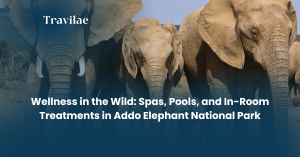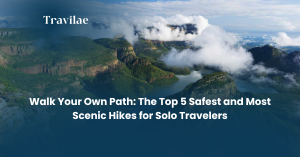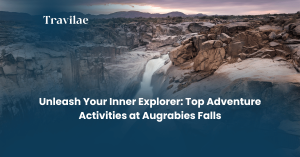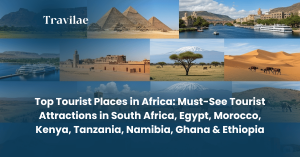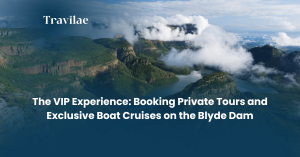Paddle Through a Desert Canyon
Imagine your paddle slicing through cool, green water as the sun warms your shoulders. On either side, ancient granite cliffs rise hundreds of feet into a brilliant blue sky. Ahead, you hear a low rumble that grows into a roar—the sound of your next challenge. This isn’t just any river trip; this is Orange River rafting at Augrabies Falls National Park, a world-class adventure that plunges you into one of the planet’s most dramatic landscapes. It’s where serene beauty meets heart-pounding fun. Whether you’re a first-timer or a seasoned paddler, this guide will show you how to experience the ultimate high-adrenaline adventure in the heart of the Kalahari.
Table of Contents
Why Raft the Orange River at Augrabies?
While there are many places to raft in Southern Africa, the stretch of the Orange River below the mighty Augrabies Falls is truly unique. Here’s why it should be at the top of your adventure list:
- A River of Contrasts: You’ll paddle through a stunningly biodiverse ecosystem—the “Green Kalahari”—carved into a sun-baked desert. The contrast between the lush riverbanks and the arid, rocky landscape is breathtaking.
- Rapids for Everyone: The river offers a fantastic mix of rapids, ranging from gentle Class I ripples to thrilling Class III and IV challenges (depending on water levels). This variety makes it perfect for mixed-ability groups.
- Incredible Scenery: You’ll navigate the lower section of the 18-kilometer-long Augrabies gorge, a place inaccessible by any other means. You get a perspective on the sheer scale and beauty of the park that few visitors ever see.
- Wildlife from the Water: Paddling quietly offers unique opportunities to spot wildlife. Look out for fish eagles, cormorants, baboons on the cliffs, and the elusive klipspringer antelope.
Best Time to Go Rafting
The experience changes dramatically with the seasons and water levels.
For Maximum Thrills (High-Water Season: Feb – April)
Following the summer rains in the interior, the river swells, creating faster currents and bigger, more powerful rapids. This is the ultimate season for adrenaline seekers who want to tackle the river at its most formidable.
For Technical Fun (Low-Water Season: June – Oct)
During the cooler, drier winter months, the water level drops. This exposes more rocks, creating a different kind of challenge. The runs become more technical, requiring precise maneuvering from your guide. The weather is also more pleasant for a full day out on the water.
Choosing Your Adventure: Half-Day vs. Full-Day
Most operators in the area offer two main options. Deciding which is right for you depends on your schedule, budget, and appetite for adventure.

| Feature | Half-Day Trip | Full-Day Trip |
|---|---|---|
| Duration | 3 – 4 hours | 6 – 8 hours |
| Intensity | A great taste of the action with several key rapids. | The complete experience with more rapids and longer calm sections. |
| Best For | Travelers short on time, families with younger teens, first-timers. | Adventure enthusiasts, those wanting full immersion in the landscape. |
| Includes | Guide, equipment, light snacks & refreshments. | Guide, equipment, riverside lunch, and refreshments. |
| Est. Cost | R800 – R1200 pp | R1300 – R1800 pp |
Note: Prices are estimates and vary between operators. Always book in advance, especially during peak season.
Finding a Reputable Operator
Your guide is your key to a safe and enjoyable trip. When choosing a rafting company, look for:
- Accreditation: Ensure they are registered with the African Paddling Association (APA).
- Experienced Guides: Ask about the qualifications and experience of their river guides.
- Safety Record: A professional company will be happy to discuss its safety procedures and equipment.
- Online Reviews: Check platforms like TripAdvisor for recent feedback from other travelers.
You can often book through the activities desk at the Augrabies Falls National Park reception or by searching for accredited rafting operators near Augrabies online.
A Paddler’s Story: The Moment of Truth
Our guide, Deon, pointed ahead. “Okay team, that’s ‘The Rollercoaster’ coming up. Listen for my calls. Paddle hard when I say paddle!” My heart hammered against my ribs. The calm water we’d been drifting on vanished, replaced by a chaotic surge of white. “PADDLE! PADDLE NOW!” Deon roared. We dug our paddles in, a surge of adrenaline making us a single, focused machine. The raft bucked like a wild horse, a wave of cold, refreshing water crashed over the bow, and for a few seconds, there was nothing but instinct, teamwork, and the raw power of the river. Then, just as suddenly, we were through, floating in a calm pool, gasping and laughing, high-fiving with our paddles. In that moment, we weren’t just tourists; we were adventurers who had faced the river and won.
Sample 1-Day Rafting Itinerary
- 8:00 AM: Meet your guides at the designated starting point for your safety briefing and to get kitted out with your life vest, helmet, and paddle.
- 9:00 AM: Launch onto the Orange River. The first hour is usually a gentle warm-up, allowing you to practice your paddling technique.
- 10:00 AM – 1:00 PM: Enter the gorge and tackle the main rapids. Your guide will navigate you through thrilling sections, with calm stretches in between for swimming and enjoying the view.
- 1:00 PM: (Full-day trip) Pull over at a secluded beach for a delicious, guide-prepared lunch.
- 2:00 PM – 4:00 PM: Continue your journey downstream, enjoying the final few rapids and the magnificent scenery.
- 4:30 PM: Arrive at the take-out point, where a vehicle will be waiting to transport you back to camp, tired but exhilarated.
Orange River Rafting: FAQs
1. Do I need any rafting experience? No. Most half-day and full-day commercial trips are suitable for complete beginners. The expert guides provide a full safety briefing and will teach you everything you need to know.
2. Is Orange River rafting safe? Yes, when you go with a reputable company. They provide certified guides, high-quality equipment (rafts, life jackets, helmets), and have robust safety procedures. The biggest safety rule is to always listen to your guide.
3. What happens if I fall out or the raft flips? This is rare but possible. Your guides are trained for this. They will instruct you on what to do—usually, it involves floating on your back with your feet up and pointing downstream until you can be pulled back into the raft. Your life jacket will keep you afloat.
4. Can I go rafting if I can’t swim? Yes. You will be wearing a high-flotation life vest at all times on the water, which will keep you afloat if you fall in. Be sure to inform your guide that you are not a confident swimmer during the briefing.
5. What is the minimum age for rafting? This varies by operator and water level, but it is generally around 12-14 years old for the more adventurous sections. Always confirm with the company when booking.
6. What should I wear and bring? Wear quick-drying clothes (like board shorts and a rash vest), secure shoes you don’t mind getting wet (water shoes or old sneakers), and a hat/cap that fits under a helmet. Bring high-SPF sunscreen, a reusable water bottle, and a waterproof camera or GoPro if you have one.
Dive into the Adventure
A day spent Orange River rafting is a day you will never forget. It’s the perfect blend of serenity and adrenaline, beauty and power. It’s a chance to challenge yourself, connect with your travel companions, and see a side of Augrabies Falls National Park that remains a secret to most. So grab a paddle, trust your guide, and get ready for the ride of your life.
Have you ever been white-water rafting? Share your favorite memory or dream destination in the comments!

